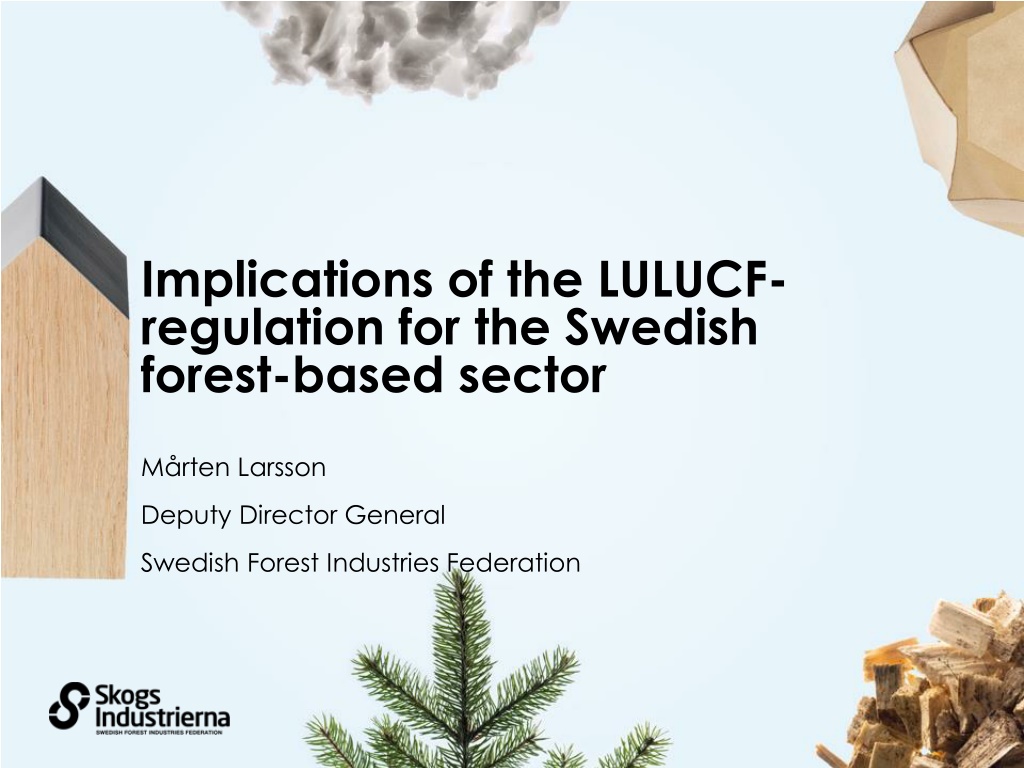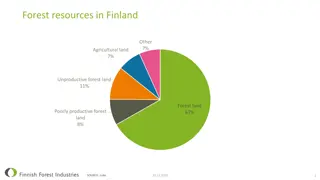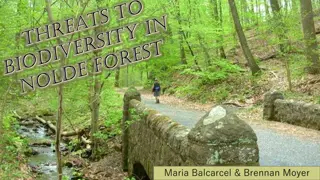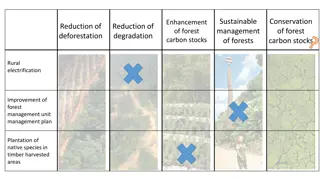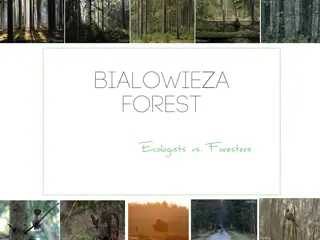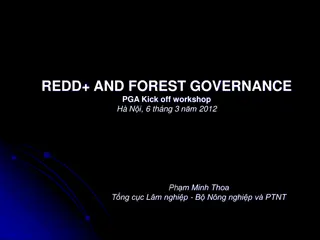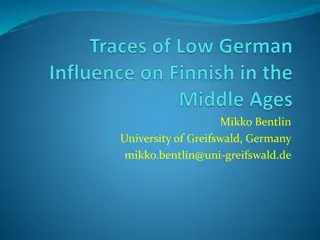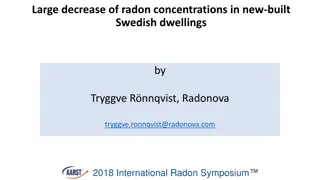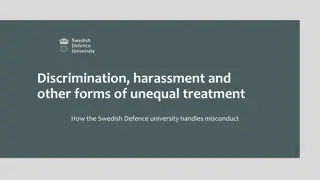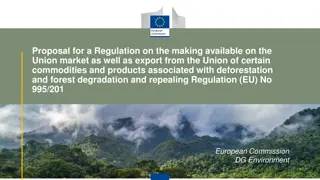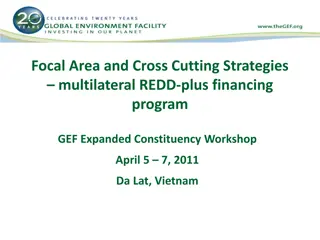Implications of LULUCF Regulation for Swedish Forest Sector
The Swedish Forest Industries Federation discusses the implications of LULUCF regulation on the forest-based sector in Sweden, aiming for a fossil-free welfare state by 2045. The sector plays a vital role in driving growth in the global bioeconomy, with sustainable forest management strategies highlighted for mitigating climate change risks. Policy-makers, forest owners, and industry collaboration are crucial for balancing sustainable harvesting levels and forest carbon stocks amidst changing climates.
Download Presentation

Please find below an Image/Link to download the presentation.
The content on the website is provided AS IS for your information and personal use only. It may not be sold, licensed, or shared on other websites without obtaining consent from the author. Download presentation by click this link. If you encounter any issues during the download, it is possible that the publisher has removed the file from their server.
E N D
Presentation Transcript
Implications of the LULUCF- regulation for the Swedish forest-based sector M rten Larsson Deputy Director General Swedish Forest Industries Federation
Our vision The forest based sector drives growth in the globala bioeconomy Swedens climate vision and goal One of the first fossil-free welfare states in the world Fossil-free 2045
The Swedish forest industry and the Swedish energy sector forms a cluster Million m3sub* Sawmills & plywoodind. 26,4 Sawn timber 36,3 Export 0,7 Import 7,8 Wood chips 9,9 Harvest 70,7 71,6 ~100 TWh of bioenergy in the Swedish energy system Fuelwood etc 6,2 Pulp & paper industry. 45,2 Pulpwood 35,3 *Solid volume under bark Source: VMR/SDC/Swedish Forest Industries Federation, 2014
Policy-makers Forest owners Forest industry
Carbon flux IPCCs IV assesment report In the long term, a sustainable forest management strategy aimed at maintaining or increasing forest carbon stocks, while producing an annual sustained yield of timber, fibre or energy from the forest, will generate the largest sustained mitigation benefit. = FRL should be as high as possible taking into account that future generations will have at least as good access to forest biomass as we have.
or carbon sink Carbon sinks in forests is a risky strategy in a changing climate
Sustainable harvesting levels 1933-2029 140 120 Growth, in nat. reserves and nat. consideration 100 Milj. m3sk 80 Harvest Growth Potential harvest 60 40 20 0 1940 1926 1933 1947 1954 1961 1968 1975 1982 1989 1996 2003 2010 2017 2024 Source: Forest Agency, rolling 5 years average
Sustainable harvesting levels 1933-2029 140 120 100 Commission proposal Milj. m3sk 80 Harvest Growth Potential harvest 60 40 20 0 1947 1982 1926 1933 1940 1954 1961 1968 1975 1989 1996 2003 2010 2017 2024 Source: Forest Agency, rolling 5 years average
SFIF - Strategic goals for LULUCF Keep national competence = Continuation of forest legislation and management practice. Support a growing bioeconomy No reduction for historic intensity A model that supports an active sustainable forest management No flexibility between Managed Forests and other sectors Use best available data Avoid carbon leakage = Limited harvest in the EU will increase imports to the EU and harvests in third countries
Implications for the Swedish forest-based sector. Definitely thumps up but the job is not finished yet The political agreement Implementation
Emissions of Greenhouse Gases From Land Use in Sweden CO2-equivalents, Million Tonnes/year Minus = Carbon Sink Source: Swedish Environmental Protection Agency
Integrating LULUCF in EUs Climate- and energy legislation touches national competence Climate EU has large/full competence Energy EU has relatively large competence but certain issues as energy mix is national competence Tax EU has no competence except for state-aid guidelines Forestry EU has no competence. Full subsidiarity for member states
Assumptions about forests and climate change benefits - what science tells us. If you assume that biomass must regrow after harvest biomass is worse than coal in the short term. In the long term trees will regrow and then bioenergy will be better than coal. If you assume that we grow the trees first, then bioenergy is always better than coal. Suppose we manage an entire state of forests. At any one time harvesting and growing occur simultaneously. Carbon goes into the forest at the same, or higher, rate than it goes out. Bioenergy is far better than coal. Add product substitution and HWP and the climate change mitigation potential is even higher.
